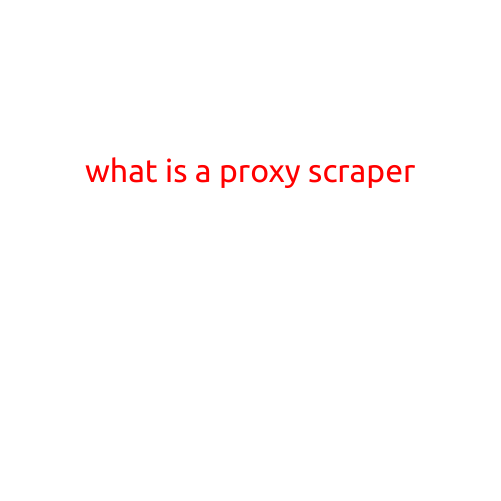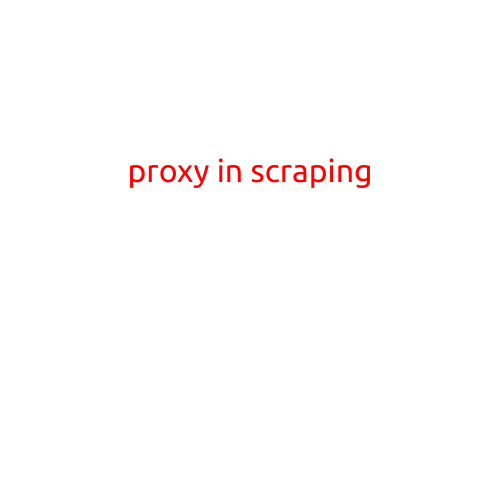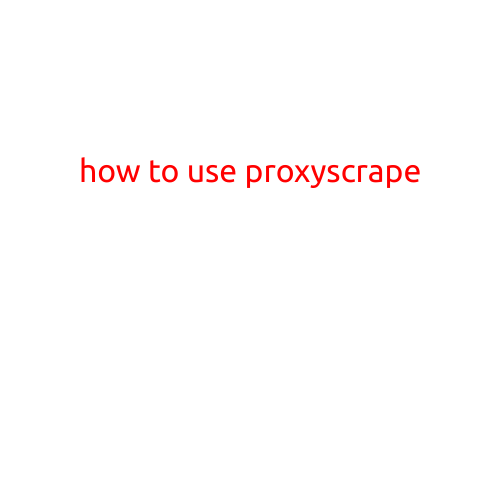
How to Scrape Proxies: A Step-by-Step Guide
As the popularity of web scraping grows, so does the need for reliable and high-quality proxies. Proxies act as intermediaries between your web scraping software and the internet, allowing you to mask your IP address and avoid being blocked by websites. In this article, we’ll show you how to scrape proxies using popular tools and methods.
Why Scrape Proxies?
Before we dive into the process, let’s talk about why scraping proxies is important. Proxies are essential for web scraping because they:
- Improve IP rotation: By using multiple proxies, you can rotate your IP address with each request, making it harder for websites to block your IP.
- Increase scraping speed: Proxies can speed up your scraping process by allowing you to make requests from multiple locations simultaneously.
- Enhance security: Proxies can mask your IP address, protecting you from IP bans and other security threats.
Method 1: Using APIs
There are several websites that offer free and paid proxy APIs. These APIs provide a list of active proxies that you can use for your web scraping project. Here’s how to use a proxy API:
- Choose a proxy API: Research and select a reliable proxy API provider, such as FreeProxyList or ProxyScrape.
- Create an account: Sign up for an account with the chosen proxy API provider.
- Get your API key: Once you have an account, get your API key or username and password.
- Use the API: Use the API to retrieve a list of proxies. The API will typically return a JSON or XML response containing a list of proxies.
Method 2: Scraping Publicly Available Proxies
There are several websites that publicly list proxies that you can scrape and use for your project. Here’s how to scrape publicly available proxies:
- Choose a proxy list website: Research and select a proxy list website that updates its list regularly, such as FreshProxies or Proxies.com.
- Inspect the website: Inspect the website’s HTML code to identify the proxy list table or container.
- Use a web scraping tool: Use a web scraping tool, such as Scrapy or Beautiful Soup, to extract the proxy list from the website.
- Clean and filter the list: Clean and filter the proxy list to remove any invalid or inactive proxies.
Method 3: Using Browser Extensions
Browser extensions are another way to scrape proxies. Here’s how to use browser extensions:
- Choose a browser extension: Research and select a browser extension that records proxy data, such as FoxyProxy or Proxy SwitchyOmega.
- Install the extension: Install the extension in your browser.
- Configure the extension: Configure the extension to record proxy data.
- Use the recorded data: Use the recorded proxy data for your web scraping project.
Common Challenges and Solutions
When scraping proxies, you may encounter the following challenges:
- Proxy rotation: Some websites may rotate their proxies frequently, making it difficult to keep your proxy list up-to-date.
- Proxy validation: You need to validate your proxies to ensure they are active and working.
To overcome these challenges, you can:
- Use a proxy rotator: Use a proxy rotator tool to automatically update your proxy list.
- Use a proxy checker: Use a proxy checker tool to validate your proxies and ensure they are active.
Conclusion
Scraping proxies is a vital step in web scraping, as it allows you to rotate your IP address and increase your scraping speed. In this article, we’ve shown you three methods for scraping proxies: using APIs, scraping publicly available proxies, and using browser extensions. By following these methods and overcoming common challenges, you can build a reliable and high-quality proxy list for your web scraping project.





